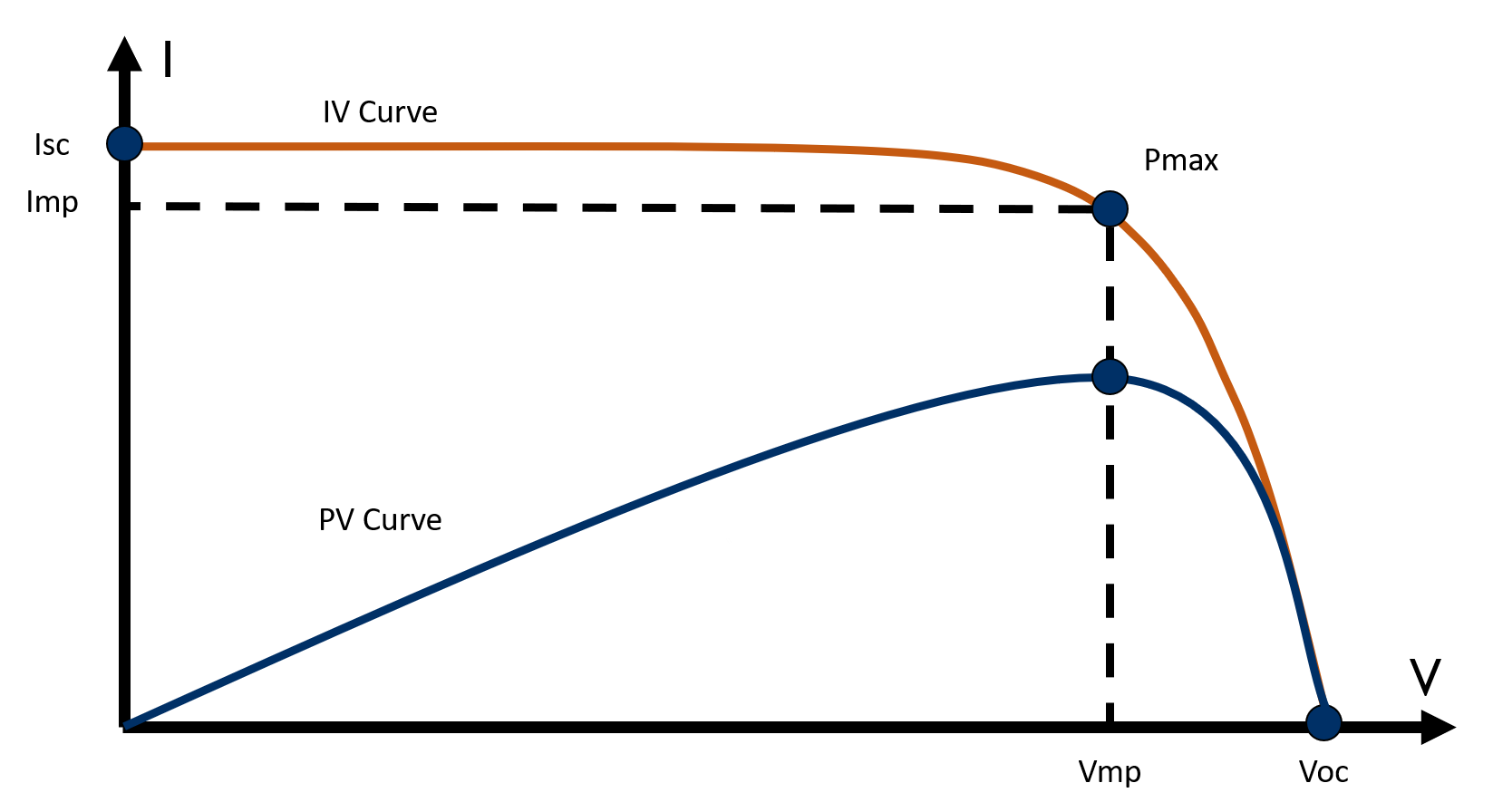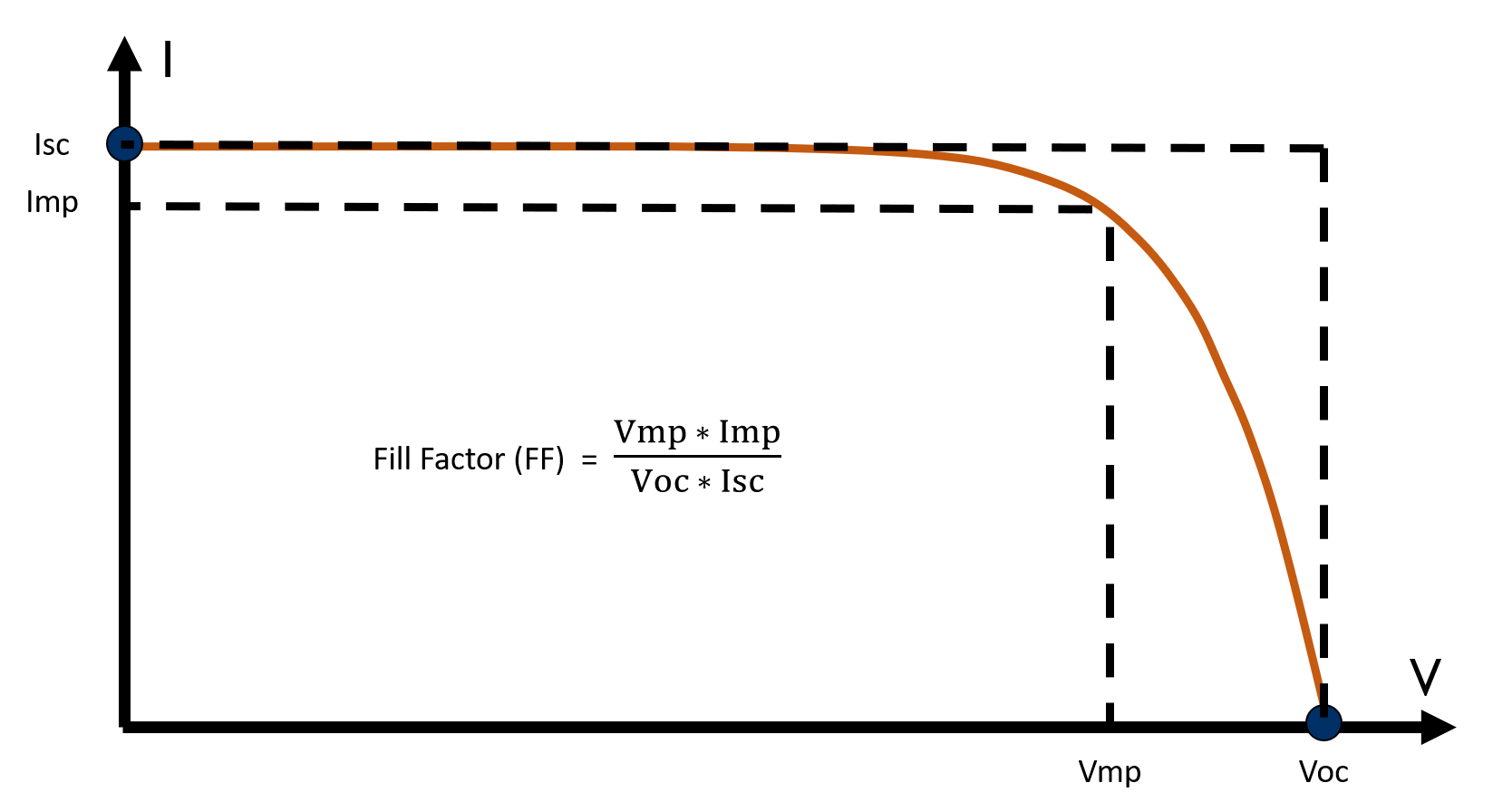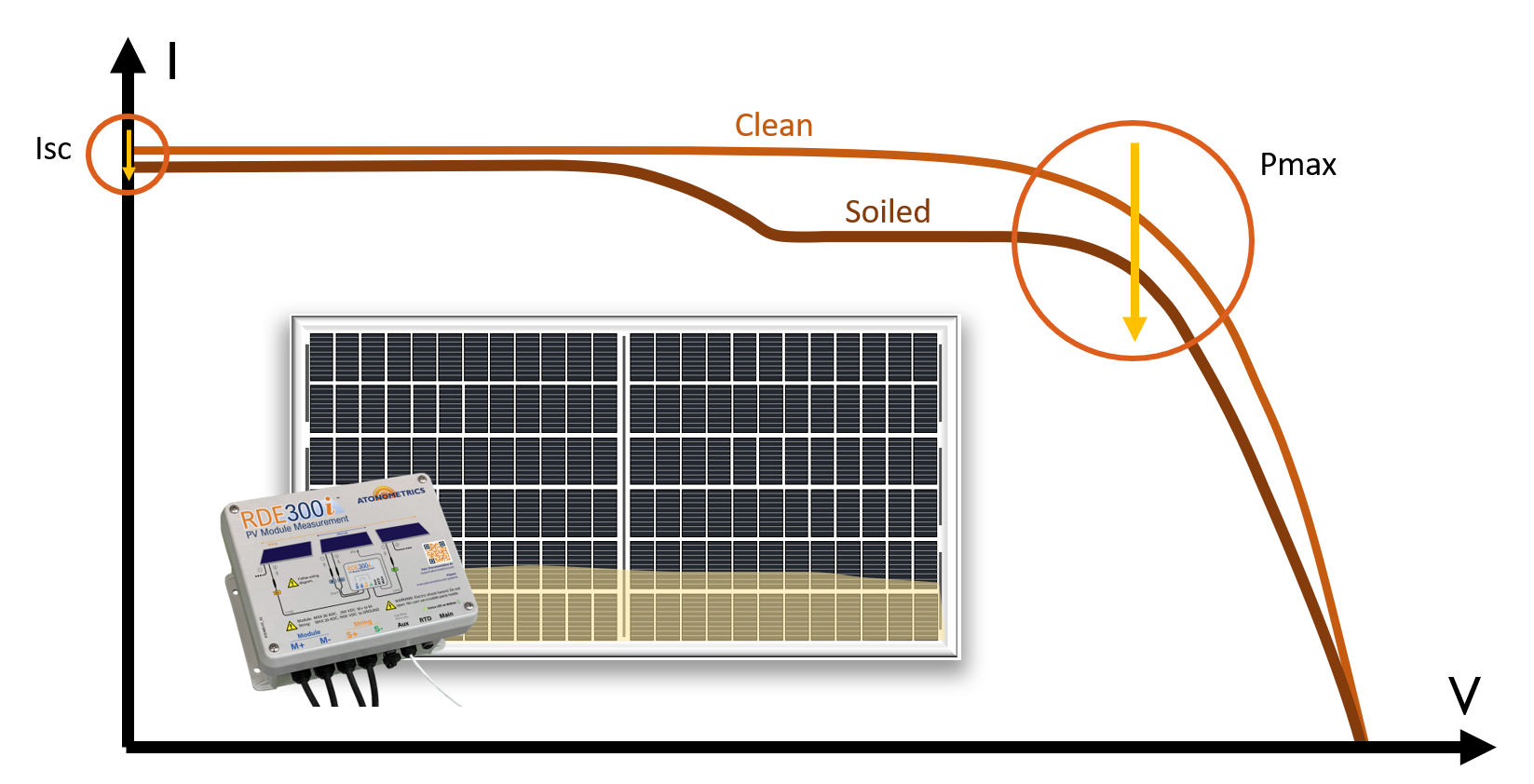What is a PV Module IV Curve?
The IV curve of a PV module is a graphical representation of the relationship between its current and voltage output under given sunlight (irradiance) and temperature conditions. It is obtained by measuring the current and voltage output of a module while varying the load.
What Parameters Can We Get From the IV Curve?
Some of the main parameters found from an IV curve include the open-circuit voltage (Voc), the short-circuit current (Isc), the maximum power point voltage (Vmpp), the maximum power point current (Impp), the maximum power (Pmax), and the fill factor (FF). The Voc is the maximum voltage that can be obtained from the module when there is no load connected, while the Isc is the maximum current that the module can produce when its output is shorted. Vmpp and Impp represent the combination of voltage and current that results in the highest power output (Pmax) from the module. The fill factor is a measure of how well the module performs and is calculated as the ratio of Pmax to the product of the Voc and Isc.

What Determines the Shape of the IV Curve?
The sloping shape of the IV curve is due to physical processes that occur within the PV cells. In a PV cell, photons from the sun are absorbed by the semiconductor material, creating electron-hole pairs. The electric field within the cell separates the electron-hole pairs, creating a flow of current.
At low voltages, the current is limited by the resistance of the cell, but at higher voltages, the current output is limited by charge carrier recombination processes, which reduce the number of electron-hole pairs available to contribute to the current. This results in a decrease in the current output as voltage increases until it reaches zero at the open-circuit voltage (Voc).
This sloping shape can be characterized by the solar cell’s fill factor. The fill factor represents the ratio of the maximum power that a solar cell can produce (Pmax) to the power that could be produced if the cell was operating at its open-circuit voltage and short-circuit current. A higher fill factor indicates a more efficient solar cell, meaning that the cell can convert the available sunlight into a greater amount of electrical energy.

Both series and shunt resistance can significantly reduce the fill factor and therefore the overall efficiency of a PV cell.
Series resistance refers to the resistance of the conducting path within the PV cell, which can be caused by the resistance of the cell's metal contacts, the resistance of the semiconductor material itself, and the resistance of any interconnects between the cells. Series resistance should be as low as possible for good efficiency. A high series resistance decreases the fill factor.
Shunt resistance refers to unintentional current flow inside the cell, which can occur due to defects in the semiconductor material. For good efficiency, shunt resistance should be as high as possible. whereas series resistance should be as low as possible.
How Does Non-Uniform Soiling Change the Shape of the IV Curve?
Non-uniform soiling refers to the irregular buildup of particulate matter on a solar module. When some PV cells are shaded more than others, the IV curve of a full-sized module behaves differently than if all the cells are shaded uniformly. This is because the most-shaded cells may be bypassed at different points along the IV curve, creating a complicated stepped curve.
In this situation, losses in maximum power (Pmax) are not
necessarily proportional to any losses in short-circuit current
(Isc). To properly measure power losses, Atonometrics offers a PV module measurement device that measures IV curves on modules operating in a string. See RDE300i PV Module Measurement System for more information.

